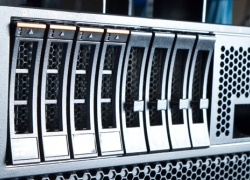Rack hygiene: A primer
Rack hygiene: A primer

It's important to keep your data center functioning properly, and maintaining proper rack hygiene is one of the most vital considerations for IT managers. Airflow management strategies work to make sure server equipment remains cool enough to function at optimum capacity. There are a few good strategies that data centers can employ in order to keep the server room cool and air flowing efficiently throughout. Let's take a look at some cooling strategies and how airflow management makes a difference in the data center.
What is rack hygiene?
First, it might be important to know what exactly "rack hygiene" means. Rack hygiene is the term that refers to how well the rack is designed and maintained. This can mean a number of things. According to Electronics Protection Magazine contributor Ed Eacueo, hot spot prevention and matching the cooling supply and demand are two of the primary drivers of rack hygiene best practices. Data Center Dynamics contributor John Collins remarked that poor rack hygiene can result in the re-circulation of hot exhaust air back into server air intakes, which can heat IT equipment to dangerous temperatures.
The answer to the problem of hot spots and poor hygiene lies in taking a look at how racks and cooling systems are designed.
Rack design
How your server room is designed has a crucial impact on whether or not air can flow efficiently enough to cool equipment. In other words, when your rack is designed with airflow in mind, it will be more hygienic and efficient. According to Energy Star, blanking panels are important in maintaining efficient airflow control in server racks. These panels are basically plates that cover the unused space on the front of server racks so that instead of going around the equipment to all the empty areas, the air goes through the equipment and provides sufficient cooling.
"Regardless of rack dimensions, it is important that data center professionals employ solutions that provide an impenetrable barrier around the front plane of the rack in a front-to-back dominated airflow environment," Eacueo wrote. "The tighter the seal provided around the front of the rack, exclusive of a thorough blanking panel strategy, the closer one can come to achieving increased energy efficiency and reduced cooling loads."
Cooling system design
Keeping server equipment at a steady temperature contributes to the overall health of the data center. According to the guidelines established by the American Society of Heating, Air Conditioning and Refrigeration Engineers, the maximum temperature at a class A1 data center should remain between 59 degrees Fahrenheit and 89.6 degrees F. In order to keep this temperature in their sights, colocation providers utilize a number of different cooling strategies within their facilities, and airflow plays an important part no matter which strategy is chosen. Here are a couple of the most popular approaches:
- Free-air cooling - It's obvious that airflow is important in a facility that employs free-air cooling strategies to keep servers at a reasonable temperature. In order to optimize the cool air that's coming into a facility, it is up to IT managers to make sure all of this air gets to the servers that need it without spinning uselessly in empty cages. That's why the aforementioned blank panels are crucial.
- Containment systems - These are among the most air and energy-efficient solutions for a data center. Collins noted that cooling efficiency and equipment reliability can be improved when containerized cooling units are deployed within the data center. These systems promote hygiene by enclosing racks in sealed structures that capture hot exhaust air and vent it out of the container - all while pumping cool air directly to air intakes of the server.
The importance of monitoring
Regardless of how a data center is kept cool or what airflow management practices are utilized, it means nothing unless managers know their efforts are being rewarded. Successful monitoring equipment can help give facility operators real-time temperature and humidity data that allows them to make important decisions about rack hygiene and cooling. If the temperature falls within the target range, that's great - but if it doesn't, operators need to be aware so that they can respond and fix the issue as soon as possible.
Cooling systems and temperature monitoring solutions like the ones offered by Geist can help promote better rack management strategies and maintain proper airflow throughout the server room. When managers know how hot or cold their racks get, they can take the proper steps to ensure proper hygiene and thus prevent hot spots. This in turn can increase ROI from the purchase of these cooling systems - after all, if equipment maintains a steady temperature, this can optimize the computing power and allow data centers to continue to provide colocation services without fear of outage.



